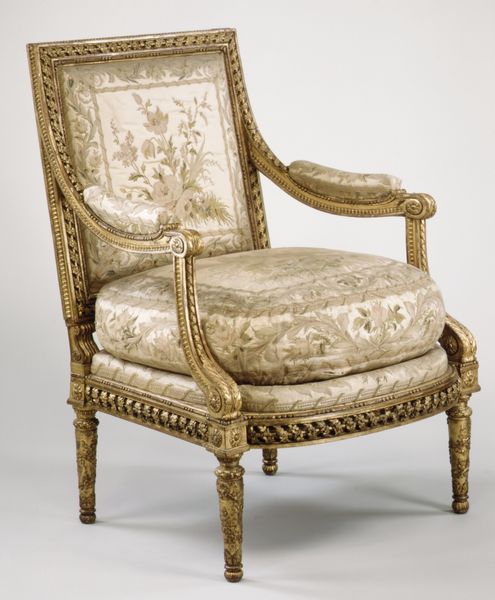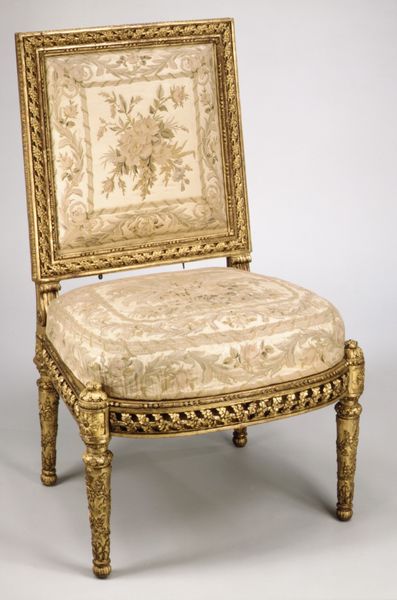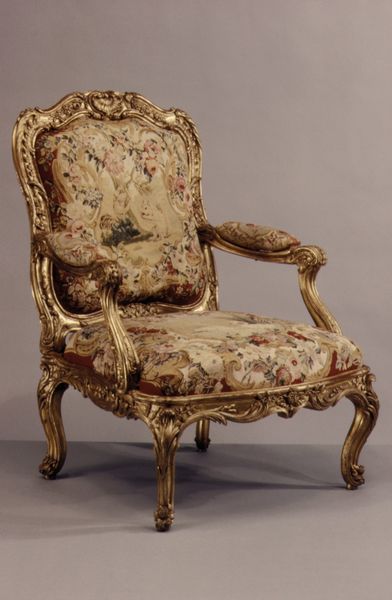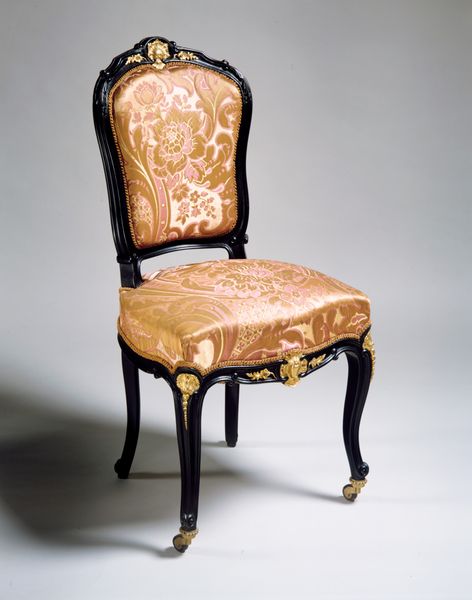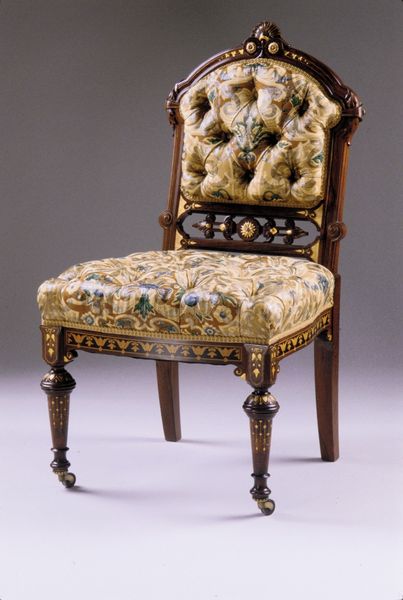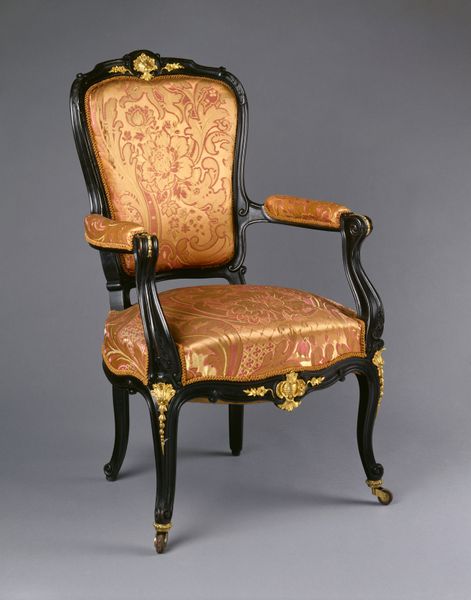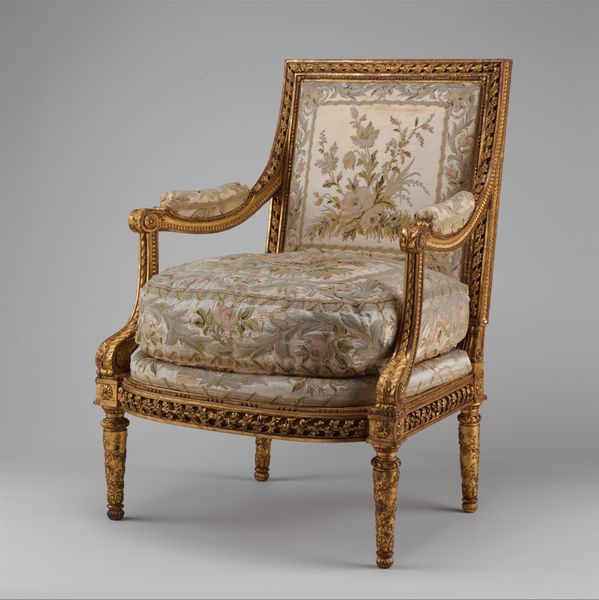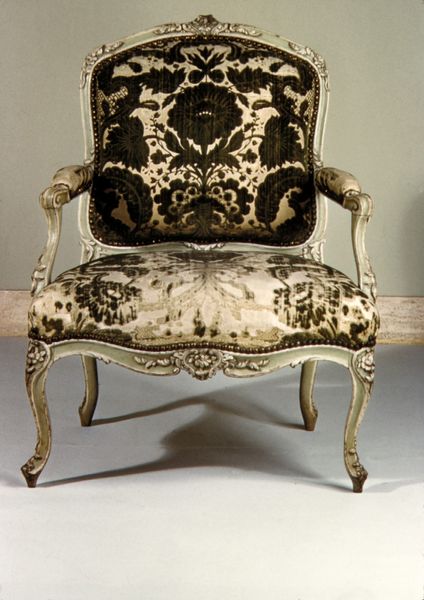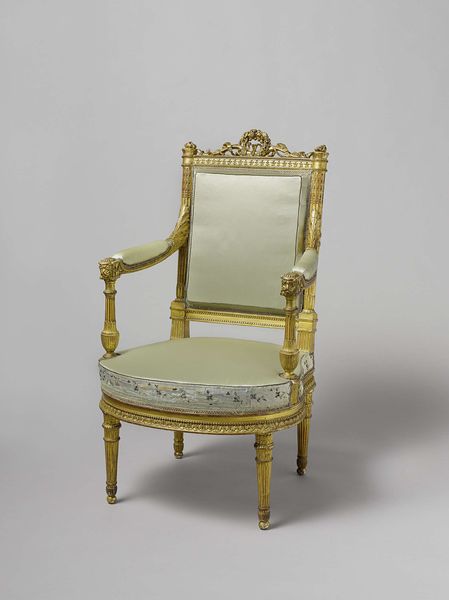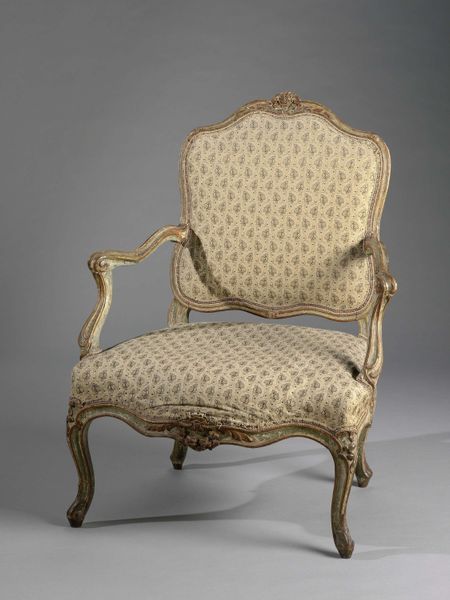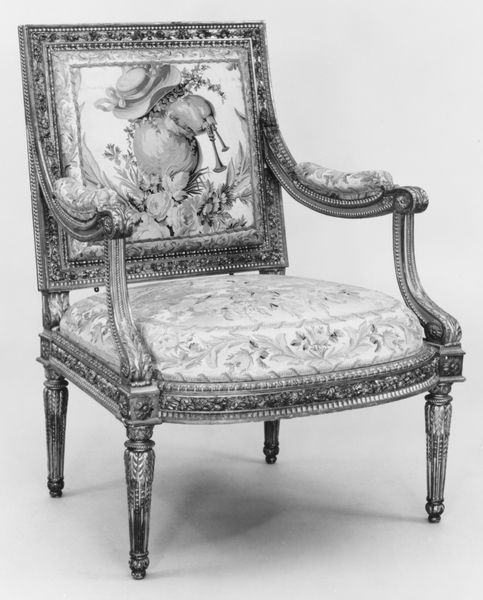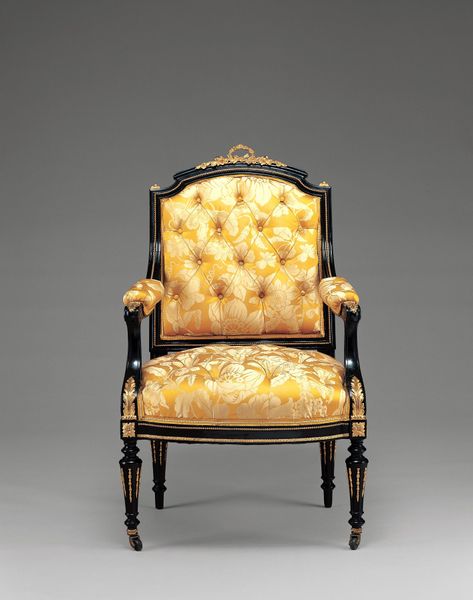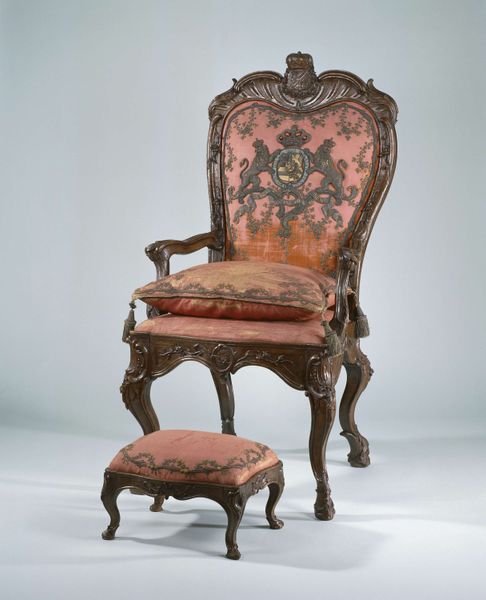
Dimensions: 41 x 27 x 24 in. (104.1 x 68.6 x 61.0 cm)
Copyright: Public Domain
Curator: Here we have an armchair, crafted between 1765 and 1785 by Georges Jacob, and held here at the Metropolitan Museum of Art. Editor: The first word that comes to mind is opulent. The gilding on the carved wood, paired with the elaborate upholstery… It speaks volumes about the priorities of the owner. Curator: Indeed. This piece speaks to the Rococo style that flourished during that era. Considering the society of the time, this chair was definitely commissioned for someone of significant means, embedding it in the narratives of wealth and power structures. The question becomes, who were these people? What roles did women play in commissioning or even using such decorative pieces? Editor: The Rococo style prioritized ornamentation. Look at the legs, the back, the seat – every surface elaborately worked. I wonder how many hands were involved in the production? Were they specialist woodcarvers, or were they more generalized labourers who contributed at various points? And how does that division of labour relate to the quality and design of the finished piece? Curator: Exactly! Thinking about the imagery woven into the fabric – those neoclassical figures around the urn, the garlands. There's a specific message being conveyed, not just about wealth, but also about education and refined taste. These chairs weren't just objects of utility, they were tools for signaling status, power, and intellectual prowess within a very specific social circle. Editor: The choice of materials themselves says so much: the quality of the wood, the presumed fineness of the original fabric – these indicate access to networks of trade, both local and international. The very possibility of a comfortable posture becomes a class marker. How long did the entire production take from sourcing wood to installation in a residence? Curator: It really prompts us to think about the interconnectedness of material culture, class, and the shaping of gender roles. By examining the artwork through this lens, we gain deeper insight into the period. Editor: Indeed, it serves as a vivid example of the artistic labor of the era, revealing power, skill, and artistry.
Comments
No comments
Be the first to comment and join the conversation on the ultimate creative platform.
